With gardens getting smaller and lifestyles changing, there is no easier or better way to extend the indoor/outdoor flow than with plants potted up in containers. Many people grow flowers, but herbs, vegetables and even some trees will grow well in pots too. Container gardening lets you grow plants which may not be suitable for your soil type, plus you can move them around to suit changing seasons.
If you are selling your home, pop some plants into pots and place them at your front door and on the deck for some instant colour and impact.
Planting in containers is also helfpul for physically handicapped or elderly people as you can place the pots on tables to avoid having to bend down while you garden. Another option is to build up planter boxes so that they are at a height that is easily reached while sitting on a chair.
Spring is a great time of year to do container gardening and there is a great selection in store now to plant up new pots or rejuvenate old ones.
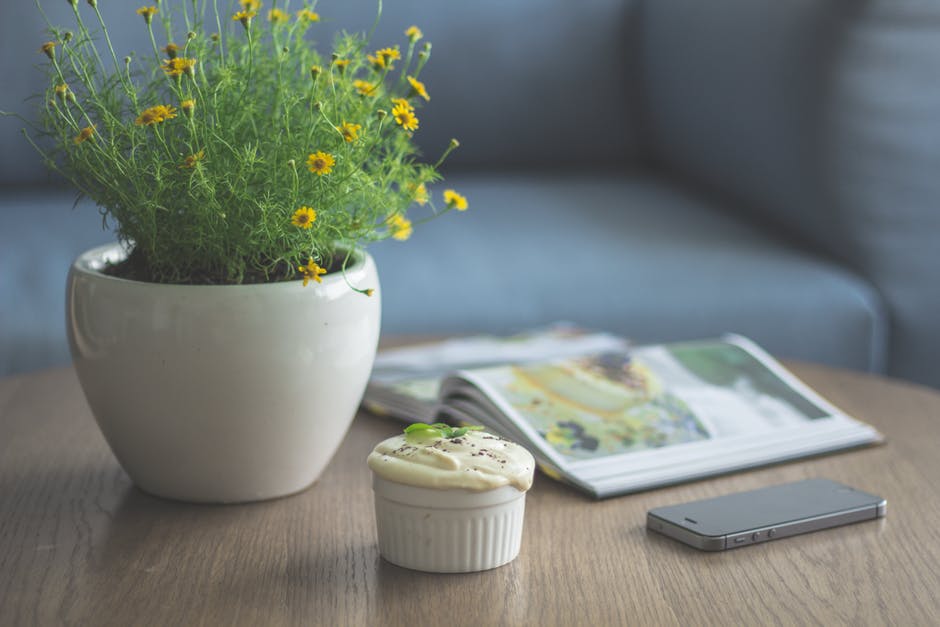
Right Plant, Right Pot, Right Place.
When selecting plants, think about:
- The Situation – Will the pot be in full sun, shade, exposed to prevailing winds or in a conservatory? Choose a plant that suits the environment it is to grow in.
- The Pot – Is it tall or squat, round or square? Whatever the shape, the plants will need to look balanced and in proportion.
- The Right Place – Is it likely that the plant will get too big for where it is placed and then will it have to be moved?
How To Plant Your Container
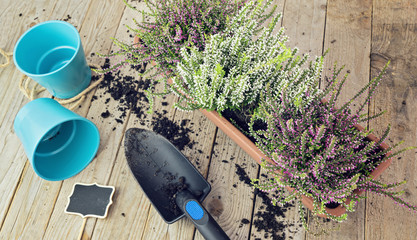 Match the pot size to the plant ensuring the pot has adequate drainage and space for the plant. Approximately 2-5cm larger than the original pot.
Match the pot size to the plant ensuring the pot has adequate drainage and space for the plant. Approximately 2-5cm larger than the original pot.
Place pieces of broken pot or scoria in the bottom of your pot around the drainage hole to ensure free drainage.
Use a good quality planting mix such as Yates Potting Mix.
Put a layer of mix into the pot and place the plant so that the top of the rootball is 1cm below the top of the pot. Do not plant your plant any deeper than it was originally.
Fill with potting mix to 1cm below the surface to allow space for watering.
Water the plant thoroughly before and after planting.
Feed regularly.
Secrets to Success
Any pot is suitable as long as it has drainage holes.
If the pot you want to use does not have drainage holes then you can place rocks, stones or broken terracotta “crock” in the bottom of the pot before planting. This will provide the drainage the plant needs, preventing the roots from sitting in water.
Pots come in all shapes, sizes and materials. Try different colour combinations, co-ordinating the pot with plant colours to complement surrounding décor or architecture. Trends and fashions often dictate the type of pot used.
For a modern look you can buy a brightly glazed pot in an unusual shape and then select a plant with foliage that will contrast the pot colour. Flaxes and Dracaena can create a contemporary look.
For a more traditional look try terracotta pots with plants that flower. Standards can provide a formal touch to a garden, or create an English Country Garden feel by filling hanging baskets with Alyssum, Lobelia and Pansies.
A quality potting mix is very important.
It is not advisable to use garden soil or compost in your patio pots and tubs. Compost generates heat as it breaks down soil, it also compacts. This starves the plant of oxygen and fertiliser. Modern potting mixes are based on peat, decomposed bark, pumice and controlled release fertilisers which have been developed specifically with container gardening in mind. Top quality mixes contain extra goodies such as Saturaid and Crystal Rain.
Saturaid is a wetting agent that spreads water to the root zone of the plants where it is needed. Crystal Rain consists of super absorbent crystals that act as a water reservoir. Quality mixes are more expensive than budget mixes, but the extra cost is worth it for the results.
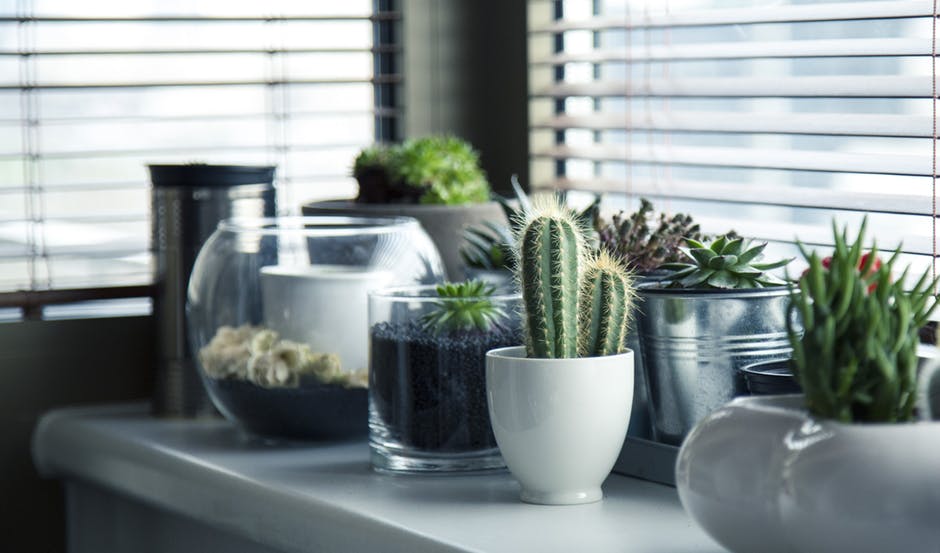
Watering
Plants grown in containers dry out more than plants in the garden. As the plant grows and the root ball becomes denser, it is harder for water to penetrate. Water plants daily in summer – early morning or late afternoon is best. Light summer showers will not be enough to thoroughly water plants in containers. Even in winter, depending upon the weather, patio pots and tubs may need watering once a week. However, in areas of severe frost it is not advisable to water containers during winter because this can do more harm than good. Irrigation systems can be installed and automated to take away the worry of watering patio pots and tubs.
Feeding
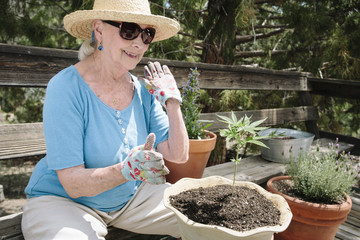 Additional feeding of plants in patio pots and tubs will be required to ensure continuous flowering and to maintain plant vigour and health. Budget mixes contain 3-4 month controlled release fertilisers, and Patio and Tub mixes 8-9 month controlled release fertiliser. With regular watering, fertilisers are leached out of the potting mix. Throughout the growing season, fortnightly feeding with a soluble fertiliser such as Phostrogen, Thrive Flower and Fruit or Nitrosol is a good idea. If you are like me and get too busy to regularly feed plants, an application of Osmocote or Green Jacket around the base of the plant will be all that is needed. Your choice will depend upon what is convenient for you.
Additional feeding of plants in patio pots and tubs will be required to ensure continuous flowering and to maintain plant vigour and health. Budget mixes contain 3-4 month controlled release fertilisers, and Patio and Tub mixes 8-9 month controlled release fertiliser. With regular watering, fertilisers are leached out of the potting mix. Throughout the growing season, fortnightly feeding with a soluble fertiliser such as Phostrogen, Thrive Flower and Fruit or Nitrosol is a good idea. If you are like me and get too busy to regularly feed plants, an application of Osmocote or Green Jacket around the base of the plant will be all that is needed. Your choice will depend upon what is convenient for you.
Ideal Plants for Containers:
Cheerful Colour – To keep these plants looking their best, the plants need to be replaced each season. Examples include: Alyssum, Pansies, Begonias, Petunias, Impatiens, Salvia, Lobelia, Verbena, Marigolds.
Repeat Flowering Colour – These plants are all perennials and will happily live in pots for 2-3 years before they should be replaced (some last longer). Most should be pruned back in the autumn, check the labels of the individual plants.
Brachyscombe, Geraniums, Colourwave Verbena, Lobelia Kathleen Mallard, Colourwave Petunias, Marguerite daisies, Dwarf Agapanthus, Nasturtium Hermine Grashoff, Felicia, Perennial Salvia.
Permanent Plants – Almost any plant will grow in the right sized pot. Slower growing trees are ideal as they require repotting less frequently. Evergreens are recommended for year round colour and texture. Agave, Gardenia, Aloe, Metrosideros Tahiti, Azalea, Palms, Bay Tree, Shaped Box, Cabbage Trees, Weeping Maples, Camellia, Yucca, Fatsia
Food & Herbs – Extend the kitchen! Many food and herb plants are suitable for containers. Basil, Mint, Capsicum, Parsley, Chives, Patio Tomatoes, Dwarf fruit trees, Strawberries, Mandarin, Thyme, Meyer Lemon, and many more…
Repotting – Re-potting trees and shrubs can be difficult. Because the roots become so tightly meshed, you will need to use a knife to run around the outside of the root ball and loosen it up. Once the plant is removed from its’ pot, before you re-plant it, you should gently break-up the roots to stimulate new growth. Always re-pot plants to the level of the potting mix in the previous pot.
Have Fun!







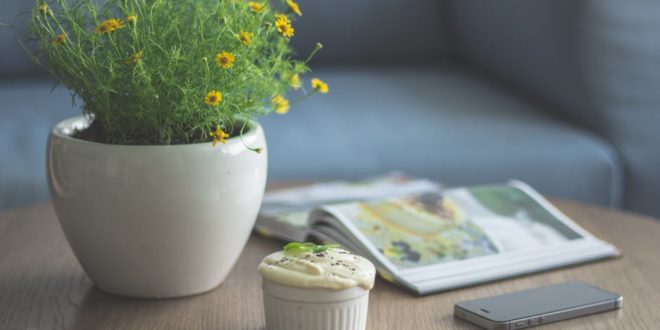
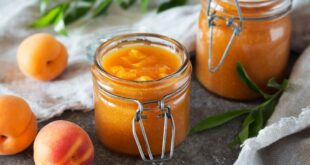
bamaconnie - 15 years ago
Since I have trouble bending over I stack two old tires up, fill with alternating layers of leaves, dirt and straw. Usually plant tomatos or pepper plants in them. The tires hold the mosture in so don’t have to water so often. By the way, I live in a rural area in the woods so no one complains about my tire garden. This is also good if you live in an area that has a lot of rabbits since they can’t climb your plants are safe.